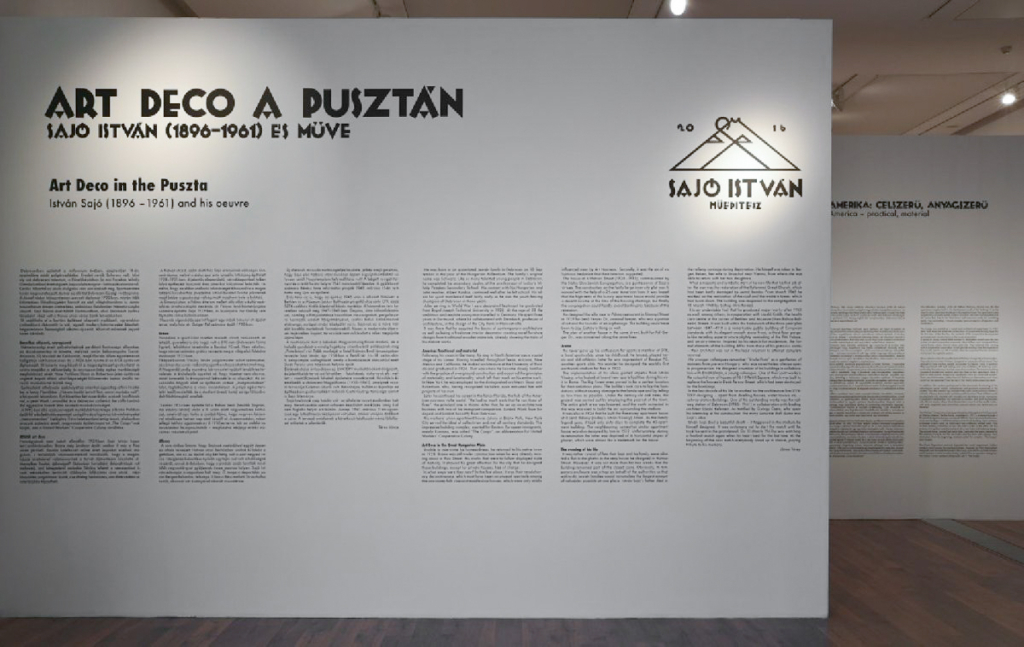Art Deco in the Puszta Sajó István (1896-1961) and his oeuvre
2016. Dec. 09. - 2017. Feb. 26.

The exhibition on the work of István Sajó sought to provide a comprehensive overview of the architect’s entire oeuvre – from his Art Deco buildings to modern, functionalist public and private buildings. The MODEM displayed the architect’s freehand drawings, plans and contemporary and modern photographs of the buildings he designed. One of the highlights of the exhibition was Sajó’s study, which was furnished with art deco furniture and objects designed by Sajó. In addition to traditional documents and photographs, the 300 m2 of space also featured interactive digital elements.
We could take a virtual stroll through the New York buildings designed by Sajó or admire the art deco staircase of the Israelite tenement building on Sixty Street. But also the cultural and public events of Debrecen in the 1930s and 1940s were revealed with the help of contemporary film newsreels. The exhibition is accompanied by a bilingual, 64-page catalogue with a study by János Térey summarising Sajó’s exciting and adventurous life.
Sajó István was born in an assimilated Jewish family in Debrecen in the year of the Hungarian Millennium. Despite his success in the US, he was unable to overcome his homesickness and returned to the Great Hungarian Plain to erect his astonishing, spacious and modern buildings among the town’s one-storey folk classicist middle-class houses.
He was a hundred percent native of Debrecen. He designed his public buildings for free and lived by drafts of those private villas from among which some survived in Simonyi Street. Although he was converted to Evangelism as an adult, he was carried off to concentration camp from where, miraculously, all of his family came back.
After the WWII, he supervised the restoration of the Reformed Great Church, which had been badly damaged by petrol bombs, and he designed the wavy concrete shell dome of the railway station of Debrecen. He not only lived an adventurous life but died a beautiful death – it happened in the stadium he himself designed. It was customary not to start the match until he took his seat in the grandstand.
On 11th March he was watching a football match when his heart beat for the last time. At the beginning of the next match everybody stood up in silence, paying tribute to his memory.
“When I was an eight-form boy I decided to go round the churches in Debrecen, as it should be. And so I did. This was the way, first of all, how I got there to the Lutheran church located in Miklós – formerly Dimitrov – Street. The priest of the church told me that a slender tower would had been added to the building in the 1930s.
‘Son, you know, Sajó would have designed it. The man who designed the stadium and the building at 6 Hatvan Street… do you know it? Yeah, the huge flesh-coloured house at the very beginning of the street. Where the bus No. 31 stops. He travelled around the United States and designed skyscrapers in New York City. All of his works are so strange.
Particularly for native eyes in Debrecen. That explains why he is not well-known today. Are you interested? His widow is still alive with her two daughters. Look them up in the telephone directory.’” (Térey János poet)
Curator: Szoboszlai Lilla
Artist: Sajó István

